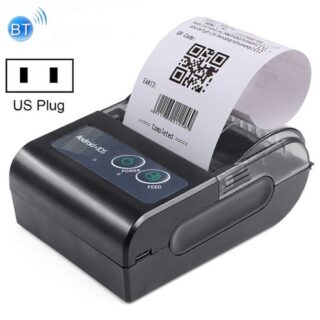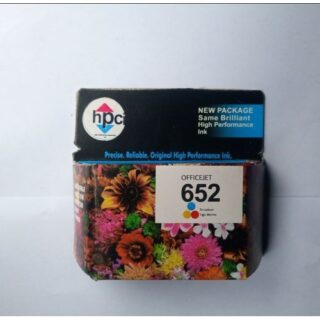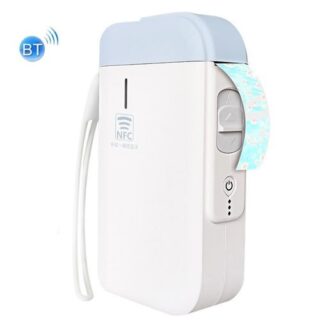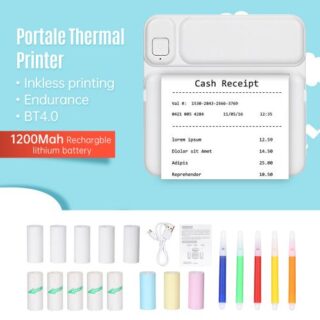Learn how to – Authenticate Kubernetes Dashboard Users With Active Directory.
The Kubernetes Dashboard is a Web-based User interface that allows users to easily interact with the kubernetes cluster. It allows for users to manage, monitor and troubleshoot applications as well as the cluster. We already looked at how to deploy the dashboard in this tutorial. In this guide, we are going to explore integration of the kubernetes dashboard to Active Directory to ease user and password management.
Kubernetes supports two categories of users:
- Service Accounts: This is a default method supported by kubernetes. One uses service account tokens to access the dashboard.
- Normal Users: Any other authentication method configured in the cluster.
For this, we will use a project called Dex. Dex is an OpenID Connect provider done by CoreOS. It takes care of the translation between Kubernetes tokens and Active Directory users.

Setup Requirements:
- You will need an IP on your network for the Active Directory server. In my case, this IP will be 172.16.16.16
- You will also need a working Kubernetes cluster. The nodes of this cluster should be able to communicate with the Active Directory IP. Take a look at how to create a kubernetes cluster using kubeadm or rke if you don’t have one yet.
- You will also need a domain name that supports wildcard DNS entry. I will use the wildcard DNS “*.kubernetes.mydomain.com” to route external traffic to my Kubernetes cluster.
Step 1: Deploy Dex on Kubernetes Cluster
We will first need to create a namespace, create a service account for dex. Then, we will configure RBAC rules for the dex service account before we deploy it. This is to ensure that the application has proper permissions.
- Create a dex-namespace.yaml file.
$ vim dex-namespace.yaml
apiVersion: v1
kind: Namespace
metadata:
name: auth-system
2. Create the namespace for Dex.
$ kubectl apply -f dex-namespace.yaml3. Create a dex-rbac.yaml file.
$ vim dex-rbac.yaml
apiVersion: v1
kind: ServiceAccount
metadata:
name: dex
namespace: auth-system
---
apiVersion: rbac.authorization.k8s.io/v1beta1
kind: ClusterRole
metadata:
name: dex
namespace: auth-system
rules:
- apiGroups: ["dex.coreos.com"]
resources: ["*"]
verbs: ["*"]
- apiGroups: ["apiextensions.k8s.io"]
resources: ["customresourcedefinitions"]
verbs: ["create"]
---
apiVersion: rbac.authorization.k8s.io/v1beta1
kind: ClusterRoleBinding
metadata:
name: dex
namespace: auth-system
roleRef:
apiGroup: rbac.authorization.k8s.io
kind: ClusterRole
name: dex
subjects:
- kind: ServiceAccount
name: dex
namespace: auth-system
4. Create the permissions for Dex.
$ kubectl apply -f dex-rbac.yaml5. Create a dex-configmap.yaml file. Make sure you modify the issuer URL, the redirect URIs, the client secret and the Active Directory configuration accordingly.
$ vim dex-configmap.yaml
kind: ConfigMap
apiVersion: v1
metadata:
name: dex
namespace: auth-system
data:
config.yaml: |
issuer: https://auth.kubernetes.mydomain.com/
web:
http: 0.0.0.0:5556
frontend:
theme: custom
telemetry:
http: 0.0.0.0:5558
staticClients:
- id: oidc-auth-client
redirectURIs:
- https://kubectl.kubernetes.mydomain.com/callback
- http://dashtest.kubernetes.mydomain.com/oauth2/callback
name: oidc-auth-client
secret: secret
connectors:
- type: ldap
id: ldap
name: LDAP
config:
host: 172.16.16.16:389
insecureNoSSL: true
insecureSkipVerify: true
bindDN: ldapadmin
bindPW: 'KJZOBwS9DtB'
userSearch:
baseDN: OU=learnhowto departments,DC=learnhowto ,DC=net
username: sAMAccountName
idAttr: sn
nameAttr: givenName
emailAttr: mail
groupSearch:
baseDN: CN=groups,OU=learnhowto,DC=learnhowto,DC=net
userMatchers:
- userAttr: sAMAccountName
groupAttr: memberOf
nameAttr: givenName
oauth2:
skipApprovalScreen: true
storage:
type: kubernetes
config:
inCluster: true6. Configure Dex.
$ kubectl apply -f dex-configmap.yaml7. Create the dex-deployment.yaml file.
$ vim dex-deployment.yaml
apiVersion: extensions/v1beta1
kind: Deployment
metadata:
labels:
app: dex
name: dex
namespace: auth-system
spec:
replicas: 1
selector:
matchLabels:
app: dex
strategy:
rollingUpdate:
maxSurge: 1
maxUnavailable: 1
type: RollingUpdate
template:
metadata:
labels:
app: dex
revision: "1"
spec:
containers:
- command:
- /usr/local/bin/dex
- serve
- /etc/dex/cfg/config.yaml
image: quay.io/dexidp/dex:v2.17.0
imagePullPolicy: IfNotPresent
name: dex
ports:
- containerPort: 5556
name: http
protocol: TCP
resources: {}
terminationMessagePath: /dev/termination-log
terminationMessagePolicy: File
volumeMounts:
- mountPath: /etc/dex/cfg
name: config
- mountPath: /web/themes/custom/
name: theme
dnsPolicy: ClusterFirst
serviceAccountName: dex
restartPolicy: Always
schedulerName: default-scheduler
securityContext: {}
terminationGracePeriodSeconds: 30
volumes:
- configMap:
defaultMode: 420
items:
- key: config.yaml
path: config.yaml
name: dex
name: config
- name: theme
emptyDir: {}
8. Deploy Dex.
$ kubectl apply -f dex-deployment.yaml9. Create a dex-service.yaml file.
$ vim dex-service.yaml
apiVersion: v1
kind: Service
metadata:
name: dex
namespace: auth-system
spec:
selector:
app: dex
ports:
- name: dex
port: 5556
protocol: TCP
targetPort: 555610. Create a service for the Dex deployment.
$ kubectl apply -f dex-service.yaml11. Create a dex-ingress secret. Make sure the certificate data for the cluster is at the location specified or change this path to point to it. If you have a Certificate Manager installed in your cluster, You can skip this step.
$ kubectl create secret tls dex --key /data/Certs/ kubernetes.mydomain.com.key --cert /data/Certs/ kubernetes.mydomain.com.crt -n auth-system12. Create a dex-ingress.yaml file. Change the host parameters and your certificate issuer name accordingly.
$ vim dex-ingress.yaml
apiVersion: extensions/v1beta1
kind: Ingress
metadata:
name: dex
namespace: auth-system
annotations:
kubernetes.io/tls-acme: "true"
ingress.kubernetes.io/force-ssl-redirect: "true"
spec:
tls:
- secretName: dex
hosts:
- auth.kubernetesuat.mydomain.com
rules:
- host: auth.kubernetes.mydomain.com
http:
paths:
- backend:
serviceName: dex
servicePort: 555613. Create the ingress for the Dex service.
$ kubectl apply -f dex-ingress.yamlWait a couple of minutes until the cert manager generates a certificate for Dex. You can check if Dex is deployed properly by browsing to: https://auth.kubernetesuat.mydomain.com/.well-known/openid-configuration
Step 2: Configure the Kubernetes API to access Dex as OpenID connect provider
Next, We will look at how to configure the API server for both a RKE and Kubeadm Cluster. To enable the OIDC plugin, we need to configure the several flags on the API server as shown here:
A. RKE CLUSTER
1. SSH to your rke node.
$ ssh rke@172.16.16.172. Edit the Kubernetes API configuration. Add the OIDC parameters and modify the issuer URL accordingly.
$ sudo vim ~/Rancher/cluster.yml
kube-api:
service_cluster_ip_range: 10.43.0.0/16
# Expose a different port range for NodePort services
service_node_port_range: 30000-32767
extra_args:
# Enable audit log to stdout
audit-log-path: "-"
# Increase number of delete workers
delete-collection-workers: 3
# Set the level of log output to debug-level
v: 4
#ADD THE FOLLOWING LINES
oidc-issuer-url: https://auth.kubernetes.mydomain.com/
oidc-client-id: oidc-auth-client
oidc-ca-file: /data/Certs/kubernetes.mydomain.com.crt
oidc-username-claim: email
oidc-groups-claim: groups
extra_binds:
- /data/Certs:/data/Certs ##ENSURE THE WILDCARD CERTIFICATES ARE PRESENT IN THIS FILE PATH IN ALL MASTER NODES3. The Kubernetes API will restart by itself once you run an RKE UP.
$ rke upB. KUBEADM CLUSTER
1. SSH to your node.
$ ssh mkemei@172.16.16.212. Edit the Kubernetes API configuration. Add the OIDC parameters and modify the issuer URL accordingly.
$ sudo vim /etc/kubernetes/manifests/kube-apiserver.yaml
...
command:
- /hyperkube
- apiserver
- --advertise-address=10.10.40.30
#ADD THE FOLLOWING LINES:
...
- --oidc-issuer-url=https://auth.kubernetes.mydomain.com/
- --oidc-client-id=oidc-auth-client
##ENSURE THE WILDCARD CERTIFICATES ARE PRESENT IN THIS FILE PATH IN ALL MASTER NODES:
- --oidc-ca-file=/etc/ssl/kubernetes/kubernetes.mydomain.com.crt
- --oidc-username-claim=email
- --oidc-groups-claim=groups
...3. The Kubernetes API will restart by itself.
STEP 3: Deploy the Oauth2 proxy and configure the kubernetes dashboard ingress
1. Generate a secret for the Oauth2 proxy.
python -c 'import os,base64; print base64.urlsafe_b64encode(os.urandom(16))'2. Copy the generated secret and use it for the OAUTH2_PROXY_COOKIE_SECRET value in the next step.
3. Create an oauth2-proxy-deployment.yaml file. Modify the OIDC client secret, the OIDC issuer URL, and the Oauth2 proxy cookie secret accordingly.
$ vim oauth2-proxy-deployment.yaml
apiVersion: extensions/v1beta1
kind: Deployment
metadata:
labels:
k8s-app: oauth2-proxy
name: oauth2-proxy
namespace: auth-system
spec:
replicas: 1
selector:
matchLabels:
k8s-app: oauth2-proxy
template:
metadata:
labels:
k8s-app: oauth2-proxy
spec:
containers:
- args:
- --cookie-secure=false
- --provider=oidc
- --client-id=oidc-auth-client
- --client-secret=***********
- --oidc-issuer-url=https://auth.kubernetes.mydomain.com/
- --http-address=0.0.0.0:8080
- --upstream=file:///dev/null
- --email-domain=*
- --set-authorization-header=true
env:
# docker run -ti --rm python:3-alpine python -c 'import secrets,base64; print(base64.b64encode(base64.b64encode(secrets.token_bytes(16))));'
- name: OAUTH2_PROXY_COOKIE_SECRET
value: ***********
image: sguyennet/oauth2-proxy:header-2.2
imagePullPolicy: Always
name: oauth2-proxy
ports:
- containerPort: 8080
protocol: TCP4. Deploy the Oauth2 proxy.
$ kubectl apply -f oauth2-proxy-deployment.yaml5. Create an oauth2-proxy-service.yaml file.
$ vim oauth2-proxy-service.yaml
apiVersion: v1
kind: Service
metadata:
labels:
k8s-app: oauth2-proxy
name: oauth2-proxy
namespace: auth-system
spec:
ports:
- name: http
port: 8080
protocol: TCP
targetPort: 8080
selector:
k8s-app: oauth2-proxy6. Create a service for the Oauth2 proxy deployment.
$ kubectl apply -f oauth2-proxy-service.yaml7. Create a dashboard-ingress.yaml file. Modify the dashboard URLs and the host parameter accordingly.
$ vim dashboard-ingress.yaml
apiVersion: extensions/v1beta1
kind: Ingress
metadata:
name: kubernetes-dashboard
namespace: kube-system
annotations:
nginx.ingress.kubernetes.io/auth-url: "https://dashboard.kubernetes.mydomain.com/oauth2/auth"
nginx.ingress.kubernetes.io/auth-signin: "https://dashboard.kubernetes.mydomain.com/oauth2/start?rd=https://$host$request_uri$is_args$args"
nginx.ingress.kubernetes.io/secure-backends: "true"
nginx.ingress.kubernetes.io/configuration-snippet: |
auth_request_set $token $upstream_http_authorization;
proxy_set_header Authorization $token;
spec:
rules:
- host: dashboard.kubernetes.mydomain.com
http:
paths:
- backend:
serviceName: kubernetes-dashboard
servicePort: 443
path: /8. Create the ingress for the dashboard service.
$ kubectl apply -f dashboard-ingress.yaml9. Create a kubernetes-dashboard-external-tls ingress secret. Make sure the certificate data for the cluster is at the location specified or change this path to point to it. Skip this step if using a Certificate manager.
$ kubectl create secret tls kubernetes-dashboard-external-tls --key /data/Certs/ kubernetes.mydomain.com.key --cert /data/Certs/ kubernetes.mydomain.com.crt -n auth-system10. Create an oauth2-proxy-ingress.yaml file. Modify the certificate manager issuer and the host parameters accordingly.
$ vim oauth2-proxy-ingress.yaml
apiVersion: extensions/v1beta1
kind: Ingress
metadata:
annotations:
kubernetes.io/tls-acme: "true"
ingress.kubernetes.io/force-ssl-redirect: "true"
name: oauth-proxy
namespace: auth-system
spec:
rules:
- host: dashboard.kubernetes.mydomain.com
http:
paths:
- backend:
serviceName: oauth2-proxy
servicePort: 8080
path: /oauth2
tls:
- hosts:
- dashboard.kubernetes.mydomain.com
secretName: kubernetes-dashboard-external-tls10. Create the ingress for the Oauth2 proxy service.
$ kubectl apply -f oauth2-proxy-ingress.yaml11. Create the role binding.
$ kubectl create rolebinding <username>-rolebinding-<namespace> --clusterrole=admin --user=<username> -n <namespace>
e.g
kubectl create rolebinding mkemei-rolebinding-default --clusterrole=admin --user=MKEMEI@mydomain.com -n default
// Note that usernames are case sensitive and we need to confirm the correct format before applying the rolebinding.12. Wait a couple of minutes and browse to https://dashboard.kubernetes.mydomain.com.
13. Login with your Active Directory user.

As you can see below: MKEMEI@mydomain.com should be able to see and modify the default namespace.

Check more articles on Kubernetes:
Monitor Kubernetes Deployments with Kubernetes Operational View
How To Ship Kubernetes Logs to External Elasticsearch
How To Perform Git clone in Kubernetes Pod deployment



































Leave a Reply
You must be logged in to post a comment.